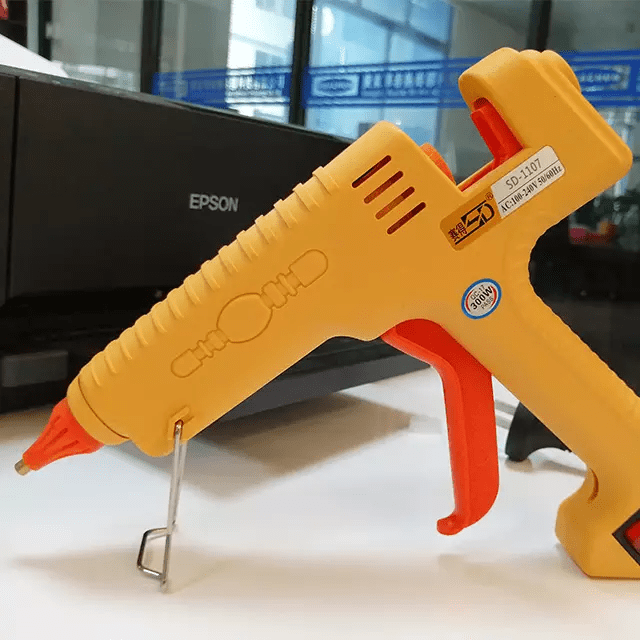How To Use Glue Gun

A glue gun is a handheld device used to apply hot melt adhesive, commonly known as glue sticks. The glue gun heats the adhesive sticks until they melt, allowing you to dispense the glue in a controlled manner.
Uses:
Crafting: Popular for various arts and crafts projects, including scrapbooking, home decor, and DIY projects.
Repairs: Used for quick repairs on items like toys, household objects, and even fabric.
Woodworking: Can be used to bond small pieces of wood, though it's not as strong as traditional wood glue.
Electronics: Often employed in electronics to secure components.
Considerations for Using a Glue Gun on Plastic:
Type of Plastic: Not all plastics bond well with hot glue. Generally, glue guns work better on porous plastics or those with a rough surface. Common plastics like polystyrene (Styrofoam) and PVC can often be successfully glued, while smooth surfaces like polyethene and polypropylene may not hold as well.
Temperature: Use a low-temperature glue gun to work with delicate plastics that might warp or melt under high heat. High-temperature glue guns can be damaging to certain plastic types.
Surface Preparation: Clean the plastic surface to remove any dust or oils, which can improve adhesion. Lightly sanding the surface can also help create a better bond.
Application: Apply the glue while it’s still hot and press the pieces together firmly for a few seconds. Allow it to cool and cure completely before putting any stress on the bond.
Testing: If you're unsure whether the glue will work on a specific plastic, test it on a small, inconspicuous area first.
Glue guns have become increasingly popular in various packaging applications, including those for food and floral exports. Here’s a closer look at their uses:
Packaging Applications:
Sealing Boxes: Glue guns provide a strong bond for sealing boxes, ensuring that contents remain secure during transit.
Flower Packaging: The quick adhesion offered by hot glue is perfect for creating bouquets and arrangements that require durable packaging. It helps secure the stems and wraps without damaging the flowers.
Juice Boxes: In the packaging of beverages, hot glue can be used to seal juice boxes effectively, ensuring they remain leak-proof.
Unga Bales: For products like flour or other dry goods, hot glue helps seal bales tightly, protecting the contents from moisture and contamination.
Food Safety:
While hot glue is not inherently food-safe, many manufacturers produce hot glue sticks that are designed for food contact. It’s essential to check for specific certifications indicating that the adhesive is safe for food applications, especially in contexts where it may come into direct contact with food packaging.
Benefits:
Speed: The fast setting time of hot glue allows for quick assembly and packaging.
Versatility: It can bond a variety of materials, including cardboard, plastic, and some metals.
Cost-Effectiveness: Glue guns are generally affordable, making them a popular choice for small businesses and large-scale operations alike.
Considerations:
When using glue guns for food packaging, always ensure that the glue sticks are specifically labeled as food-safe to avoid any potential contamination.
Overall, the versatility and efficiency of glue guns make them a valuable tool in modern packaging processes.

